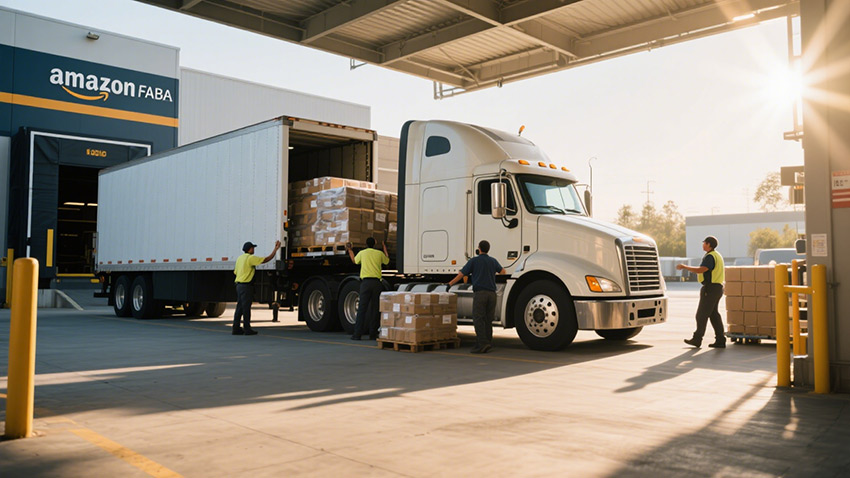In today’s booming global e-commerce landscape, Amazon FBA (Fulfillment by Amazon) has become a vital channel for many Chinese sellers to expand into international markets. However, the process of shipping goods from China to Amazon FBA warehouses often presents various challenges. This article will explore common issues in this process and provide practical solutions through real case studies.
1. Preparations Before FBA Shipping
1. Product Compliance Issues
Many Chinese sellers overlook target market compliance requirements during their first shipment. For instance, a Shenzhen-based electronics seller once had an entire shipment detained by customs due to lacking EU CE certification, resulting in tens of thousands of dollars in losses. Different countries have specific certification requirements for various products, such as FCC certification for the US or PSE certification for Japan.
2. Labeling and Packaging Standards
Amazon has strict labeling requirements for FBA shipments, including product labels and shipment labels. A Hangzhou apparel seller experienced a two-week delay in inventory processing due to improper label placement. Correct practices include: each product must have an FNSKU label, and each outer box needs Amazon’s shipping label, ensuring original barcodes aren’t covered.
3. Inventory Management and Shipping Plans
Proper shipment quantity planning is crucial. A Guangzhou home goods seller once shipped six months’ worth of inventory to US FBA, only to see nearly all profits consumed by long-term storage fees. Recommended practice: ship in batches based on sales forecasts, maintaining 3-4 weeks of inventory.
2. Common Shipping Process Issues
1. Transportation Method Selection
A Dongguan toy manufacturer missed the Christmas sales season due to unfamiliarity with shipping schedules and customs clearance times when using ocean freight for the first time. Shipping methods should be chosen based on product characteristics, timeline requirements, and budget:
- Air freight: 3-7 days, suitable for small batches of high-value goods
- Ocean freight: 30-45 days, ideal for large quantities of low-value goods
- Express: 3-5 days, appropriate for urgent replenishment
2. Tariffs and Customs Clearance
A Foshan appliance seller faced delays and additional fees due to discrepancies between declared and actual values during customs inspection. Tariff policies vary significantly by country—the US allows duty-free imports under $800, while the EU requires VAT regardless of amount. Recommendation: research target country tariff policies and declare values accurately.
3. Shipping Damage and Insurance
A Shanghai ceramics seller couldn’t claim compensation for 30% damaged goods because they hadn’t purchased shipping insurance. Fragile items should have full insurance coverage and shock-proof packaging. Experienced logistics providers can significantly reduce shipping risks.
3. Common FBA Warehouse Receiving Issues
1. Inventory Splitting
Amazon may distribute shipments across multiple warehouses. A Xiamen sports equipment seller saw 2,000 products divided among three warehouses, increasing logistics costs. Solutions include:
- Using Amazon’s Inventory Placement Service (for a fee)
- Adjusting shipment quantities (full or half pallets)
- Utilizing third-party overseas warehouses as intermediaries
2. Receiving Discrepancies and Losses
A Chengdu stationery seller shipped 1,000 units but Amazon registered only 980. In such cases, immediately open a case for investigation, providing packing lists and shipping confirmation documents. Preventive measures:
- Photograph/video record before shipping
- Use transparent packing tape (for easier Amazon inspection)
- Purchase cargo insurance
3. Peak Season Receiving Delays
Holiday seasons (like Black Friday or Christmas) may see 2-3 week receiving delays. A Shenzhen electronics seller experienced one-month stockouts by not accounting for peak season factors. Recommendation: plan ahead, shipping 6-8 weeks before peak seasons.
4. Real Case Analysis and Solutions
Case 1: Label Errors Causing Complete Return
A Zhejiang maternal-child products seller shipped 500 items to German FBA, only to have them rejected for using Chinese labels. Solution: All products relabeled and resent via overseas warehouse, costing an additional $2,000. Lesson: Always use target country language labels.
Case 2: Ocean Delay Missing Sales Season
A Shandong furniture manufacturer shipped via ocean freight three months ahead but missed Prime Day due to port congestion. Solution: Emergency air freight for partial inventory to maintain promotions, with ocean shipments redirected to third-party warehouses upon arrival. Lesson: Prepare multiple shipping options for critical sales periods.
Case 3: Size Measurement Errors Inflating Fees
A Guangzhou home goods seller’s incorrect measurements led to 40% higher storage fees. Solution: Redesigned packaging to reduce dimensions, saving 30% on subsequent shipments. Lesson: Always measure products using Amazon’s standard methods before shipping.
5. Professional Recommendations and Best Practices
- Establish Standardized Procedures: Create shipping checklists covering every step from product preparation to warehouse receipt.
- Partner with Professional Logistics Providers: Choose freight forwarders with extensive FBA experience who understand Amazon warehouse requirements and current policies.
- Utilize Technology Tools: Implement inventory management software to monitor stock levels and set up automatic replenishment alerts.
- Stay Updated on Policy Changes: Amazon frequently updates policies—subscribe to official notifications and attend relevant training.
- Prepare Contingency Plans: Develop Plan B for potential delays or inspections, such as maintaining backup inventory in overseas warehouses.
Shipping from China to Amazon FBA is complex but manageable. By understanding common issues, learning from others’ experiences, and establishing systematic processes, Chinese sellers can significantly reduce risks and improve operational efficiency. Remember: Successful FBA operations are built on attention to detail—every shipment represents an opportunity to optimize your processes.










Leave a Reply